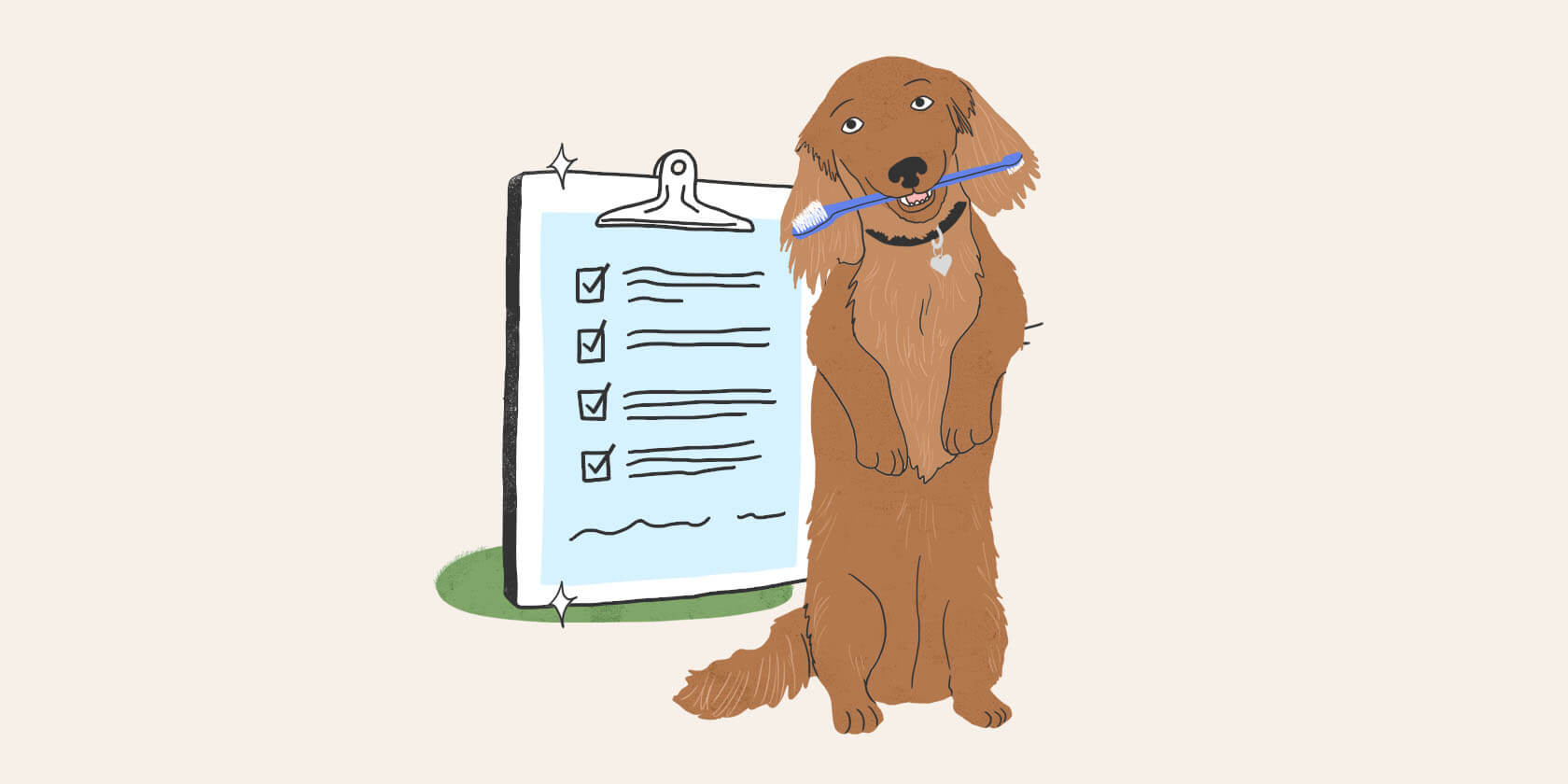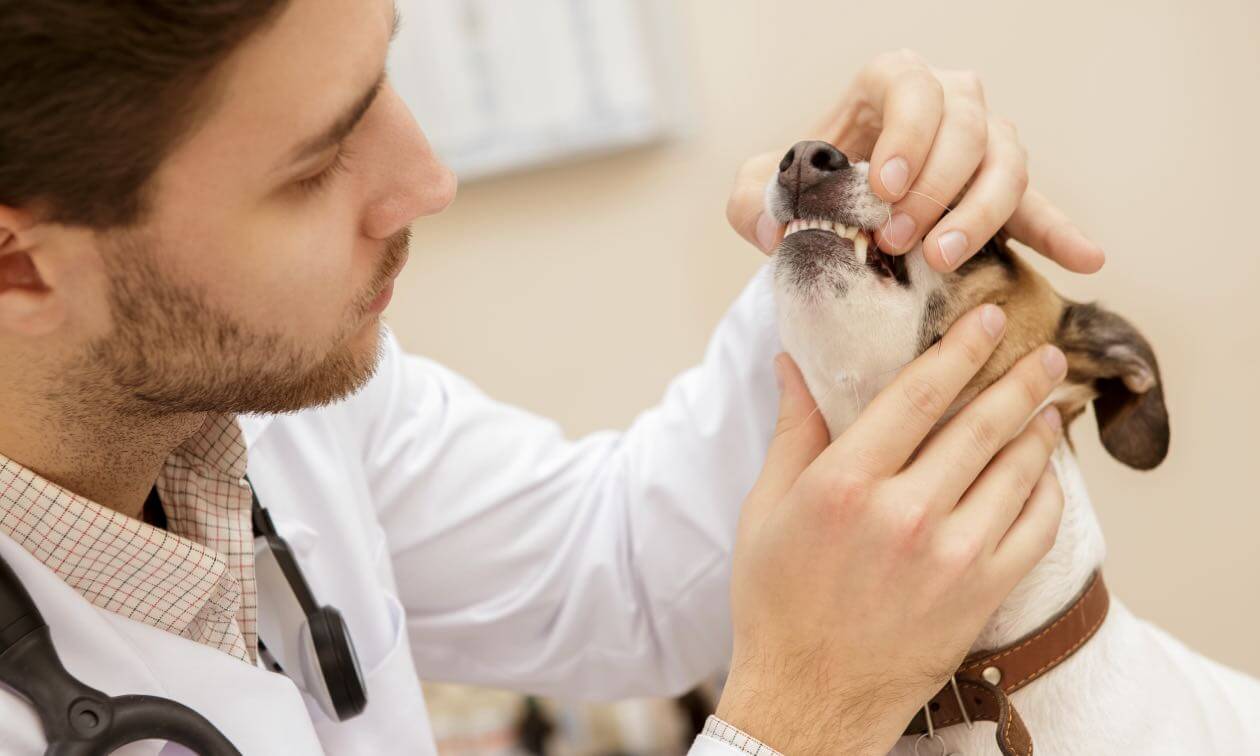Congrats! You’ve decided to take charge of your pet’s dental health and get their teeth cleaned! Keeping your pet’s teeth and gums clean and healthy can help to prevent periodontal disease and other serious health problems down the road. Here’s what you can expect when your pet gets a dental cleaning.

Before the Procedure
You and your veterinarian will discuss your pet’s medical history and your vet will perform a complete physical exam. They may also take a sample of blood (and possibly urine, too) for a laboratory work-up. Your vet will discuss possible procedures to identify and treat the underlying dental problems including dental cleaning or scaling, periodontal probing, dental x-rays, and others. They will also polish the teeth to provide a pearly white smile! Tooth polishing also helps smooth the tooth surface to reduce future plaque and tartar buildup.
Your veterinarian will give you exact instructions, but you may be asked to withhold food from your pet the evening prior to the procedure to reduce the chance that your pet may vomit during the procedure. The duration of time recommended will vary depending on your pet’s age, pre-existing medical conditions, or any medications they are on.
Expect to drop your pet off at the veterinary clinic early to get them settled in and have their pre-anesthesia exam. Your vet may administer “pre-meds” (medications that can help to decrease anxiety, pain, vomiting, and even the amount of other drugs needed to provide general anesthesia). Your veterinarian may also give your dog a medication to prevent vomiting and help them return to eating sooner after the dental procedure is completed.
During the Procedure
Unlike when you go to the dentist, to get the best evaluation and dental care, our pets need to be anesthetized during their dental procedure. Anesthesia is necessary because it allows your pet to be still so your vet can conduct a thorough examination of the whole oral cavity (including below the gumline), take x-rays (to look for “hidden diseases”), and fully and safely clean your pet’s teeth. This also ensures a safe and comfortable experience for your pet by reducing their level of anxiety, stress, and pain. In addition, it protects their airway from any water or debris caused by scaling away the dental plaque and tartar that finds its way down into your pet’s lungs during the procedure.
During the dental procedure, your vet will remove plaque and tartar from the teeth and polish them. They will also use a dental probe (like the one your dentist uses on you) to look for pockets of infection around the tooth roots and in the gum. This lets them check the health and stability of the dental ligaments and bony structures beneath the gumline.
Dental x-rays may be recommended to fully evaluate the periodontal health of your pet’s mouth and to make sure that no “hidden” disease is present and waiting to flare up (like brewing tooth root infections or resorbed tooth roots). If your veterinarian finds damaged teeth, they may recommend extractions (removing the teeth) or other procedures as necessary.
After the Procedure
After your dog or cat’s dental procedure, your veterinarian or veterinary technician will review everything that was performed during the dental procedure with you. If there is an infection or if your pet has an underlying condition that makes them more susceptible to infection, your vet may give or prescribe an antibiotic. Pain medication may also be provided as there can be some level of inflammation and discomfort following a dental procedure.
Your vet may prescribe or send you home with:
- Antibiotics
- Recommended dental diet
- Recommended dental chews
- Recommended toothbrush/toothpaste
- Dental pads or wipes
Your vet may recommend feeding just soft food for several days after the procedure if there were any extractions, to allow the extraction sites to heal as best as possible. If extractions happen — or even if not — there may be a recheck appointment needed a week or so later to ensure that all is healing and progressing as best as possible.
Once your pet is discharged and you take them home, you may notice some grogginess, drooling, or drowsiness for several hours. They’re typically almost back to normal that evening and should definitely be back to their normal self (often even better, as the discomfort their dental and periodontal disease had been causing them is now gone!) by the next day. If at any point you’re concerned, don’t hesitate to call your veterinarian for advice.
An anesthetized dental procedure with your veterinarian is just one step to ensuring your pet's good dental health. Your vet will go over best methods of at-home dental care going forward after the procedure.
ZPC-00186R2



